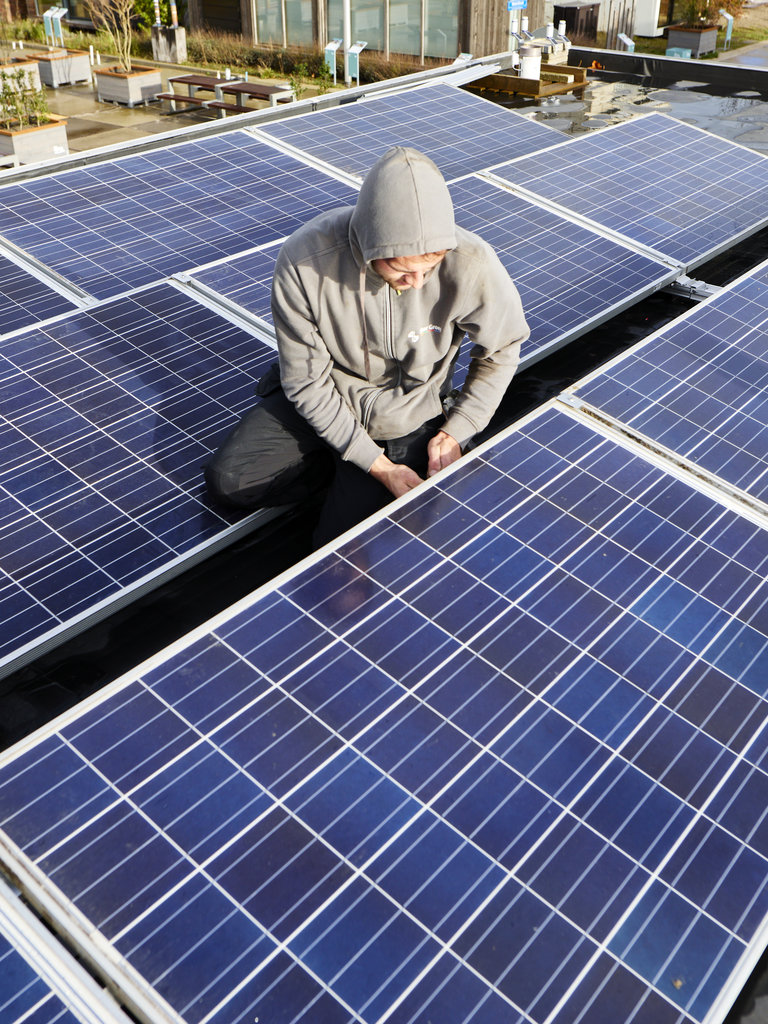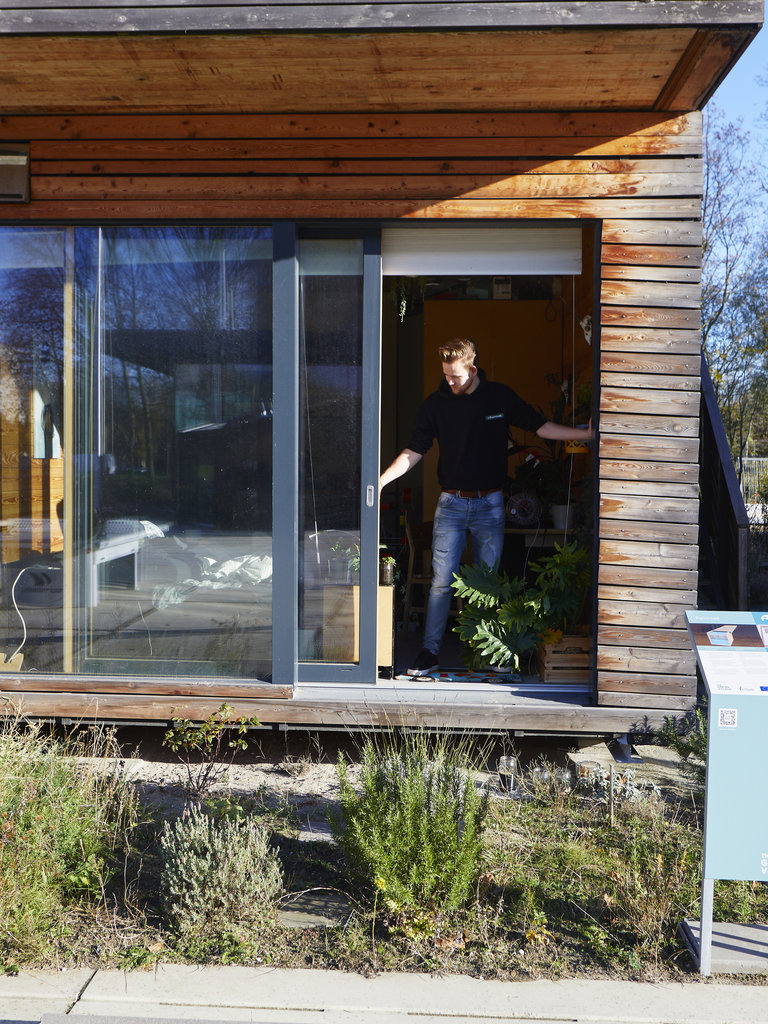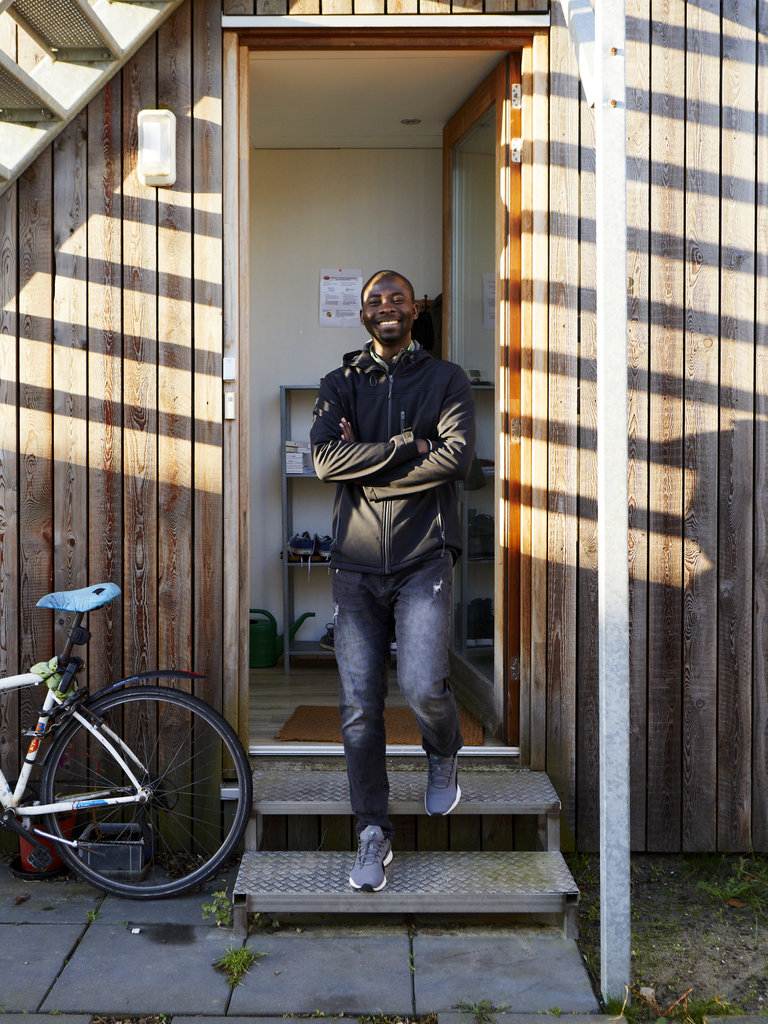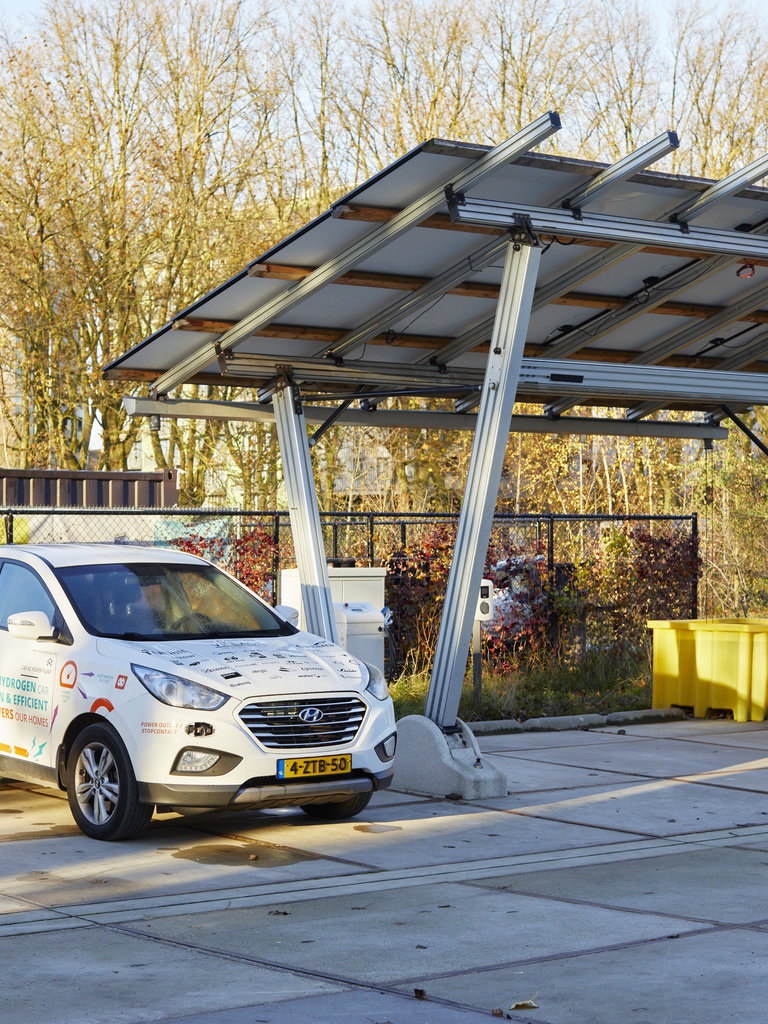
TU Delft is building a local, CO2-free energy system for the built environment in The Green Village
By: Jurjen Slump
The energy transition will be at its most tangible in residential areas, where there are major challenges. Residents will need to make the switch from gas and the increase in heat pumps and renewable, localised energy production is creating problems for the electricity grid. In The Green Village, the field lab for sustainable innovation on TU Delft Campus, a unique project has been launched in order to accelerate the energy transition in the built environment: the development of a local CO2-free self-sufficient energy system.
Over recent years, a conventional natural gas network was already set up in The Green Village and was later adapted for hydrogen. Some 1970s-style terraced houses were built in order to research how these homes, still very common, can be made more sustainable. There is also an open low-temperature heating grid. There are electric cars that can be used as batteries and the site has access to a DC and AC electricity network.

Huge step forward
All of these projects sowed the seeds for the new 24/7 Energy Lab project: the establishment of a local energy system. The idea behind it is simple, explains Marjan Kreijns, director of The Green Village. “Currently, the built environment accounts for some 35% of energy demand in the Netherlands. If we succeed in making this partially CO2-free, we will be taking a huge step forward in accelerating the energy transition.”
However, the use of renewable energy in making residential areas self-sufficient is not without its challenges. “Demand and supply always need to be balanced”, explains John Schmitz, the former Dean of the Faculty of Electrical Engineering, Mathematics and Computer Science, who is leading the project. “Renewable energy causes significant fluctuations: there’s no sunshine at night and the wind can also drop completely. What’s more, most solar energy is generated in the summer, whereas energy demand in buildings peaks in the winter.”

Seasonal buffer
One of the potential solutions involves building up a seasonal buffer to store excess energy generated in the summer for use in winter. This is possible using a battery, with hydrogen or by storing heat in underground wells. “We intend to explore how we can use batteries and hydrogen as storage media”, says Schmitz. When energy exceeds demand, the surplus green energy will partly be stored in batteries and partly used for hydrogen production.
In the event of a shortfall during the day, the batteries can step in immediately and the hydrogen can be converted back into electricity in the winter. The conversion of hydrogen into electricity also releases heat. “We want to see whether we can capture this heat and feed it back into the heating network.”
This is bringing all of the projects from recent years together. “We have solar panels, a system for making hydrogen and converting it into electricity, a hydrogen network, an open low-temperature heating grid, an AC and DC electricity network and homes fitted with heat pumps and hydrogen central heating boilers”, explains Kreijns. “This gives us all the ingredients for a ‘smart multi-commodity grid’ that connects the different energy carriers – molecules, electrons and heat.”
The hydrogen network and the heating grid were installed in collaboration with grid operators Alliander, Enexis and Stedin. “Of course, we’re also talking to them about this project. They’re very interested in hearing about the results.”

Smart management
The greatest technological challenge involves linking together all of these components and managing them. Electricity, gas and heat now flow through the street separately, but that is set to change. A stable, sustainable energy system will require convergence between electricity, hydrogen and heat, with specific possibilities for buffering each of these. “You will need transformers in order to connect solar panels, which supply direct current, to an alternating current network”, explains Schmitz.
Fuel cells for the consumption of hydrogen produce a low-voltage direct current, which means you also need another converter for that. “How all this will work in practice is not at all clear at the moment. That is what we now intend to research.”
The same applies to its management. “Does it make sense to produce hydrogen all day long or is the opposite the case? And how much energy can you store in batteries or heat buffers? Within two years, we aim to develop an Energy Management System (EMS) that makes the right choices. The whole system will be packed full of sensors and all of the data will be collected on The Green Village data platform. The data can then be used to optimise the system.

Upscaling
The project is starting on a small scale: the capacity of the basic system is sufficient to meet the energy needs of a student house. After that, all of the buildings and systems in The Green Village will be connected and the electric vehicles (using one’s own car as a battery), the solar panels and possibly small wind turbines will then come into play. All of this will be integrated in this autonomous network with the help of the EMS.
This will be an important step: The 24/7 Energy Lab must demonstrate how these technologies can be upscaled affordably. This is why commercially available components are being used, to enable rapid upscaling. Schmitz expects it to take around two years before the EMS is fully up-and-running and at least five years until the whole Green Village is autonomous.
It will then be possible to consider further upscaling, connecting up entire residential areas. When that becomes a reality, it will have the added advantage of taking the pressure off the electricity grid, because energy will be locally generated and consumed on a large-scale. “Electricity consumption will increase significantly as a result of the energy transition”, says Schmitz. “There is already an awful lot of congestion on the grid.”

Social experiment
The technological aspects are just half of the story. “The energy transition is actually a massive social experiment”, says Kreijns. “For example, who owns this locally generated energy? What happens if your neighbour switches on the fuel cell to produce electricity? Who pays for that and how will it be calculated?” Residents are quite willing to participate in the energy transition, provided it does not cause them too much hassle. “We intend to show that it’s possible to ensure that there is always sufficient energy, in a smart and sustainable way, without residents being inconvenienced.”
The Green Village will hold a unique position, as a living lab. There are currently around twelve people living in it, and their experience as consumers will be extremely valuable in developing a user-friendly system. “This will be an energy lab with real people. That’s what makes it unique. It’s going to teach us an awful lot.”

Energy Switch
Any large-scale application of energy-autonomous districts will also require action on the part of politicians. There are still plenty of legal restrictions, especially concerning the use of hydrogen. “Legislation on heating, electricity and gas is lagging behind the technology”, says Kreijns. “There is a real need for politics in The Hague to provide more room for manoeuvre when it comes to developing innovations.”
There is also a significant lack of qualified staff looming. “We will be facing shortages across all sectors: among the grid operators, installation companies, manufacturers of solar panels and heat pumps”. This is why TU Delft and The Green Village have established the Energy Switch programme, with a view to making the labour market in Zuid-Holland energy transition proof. A range of players in Zuid-Holland are joining forces in Energy Switch to achieve more effective coordination of demand, supply and training and retraining.
Delta Works
The major ambitions and challenges that the energy transition brings for the urban environment all come together in the 24/7 Energy Lab. If it proves a success, the Netherlands will also benefit as a country. “If, as a nation, we effectively focus on the development of the hardware or business models associated with this kind of system, it could bring economic prosperity as well”, anticipates Schmitz. “As a task, you might compare it to the Delta Works, but this time in the field of energy.”
TU Delft has the ambition to play a pioneering role in the Netherlands in the energy transition. With the Tech for Energy campaign, Delft University Fund is contributing to this ambition, the first project we support is 24/7 Energy Lab.
